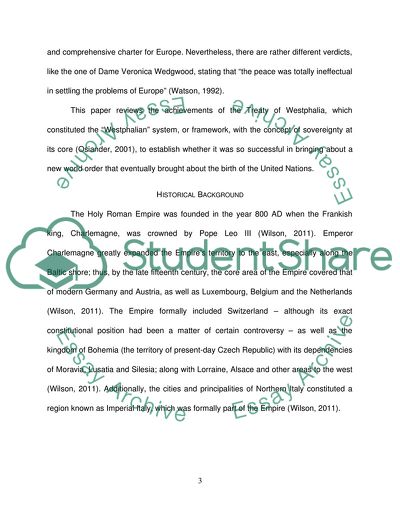Cite this document
(The Notion that the Sovereign Territorial State Came to Dominate International Politics Essay Example | Topics and Well Written Essays - 2500 words, n.d.)
The Notion that the Sovereign Territorial State Came to Dominate International Politics Essay Example | Topics and Well Written Essays - 2500 words. https://studentshare.org/history/1789821-the-notion-that-the-sovereign-territorial-state-came-to-dominate-international-politics-following-the-peace-of-westphalia-is-a-myth-do-you-agree
The Notion that the Sovereign Territorial State Came to Dominate International Politics Essay Example | Topics and Well Written Essays - 2500 words. https://studentshare.org/history/1789821-the-notion-that-the-sovereign-territorial-state-came-to-dominate-international-politics-following-the-peace-of-westphalia-is-a-myth-do-you-agree
(The Notion That the Sovereign Territorial State Came to Dominate International Politics Essay Example | Topics and Well Written Essays - 2500 Words)
The Notion That the Sovereign Territorial State Came to Dominate International Politics Essay Example | Topics and Well Written Essays - 2500 Words. https://studentshare.org/history/1789821-the-notion-that-the-sovereign-territorial-state-came-to-dominate-international-politics-following-the-peace-of-westphalia-is-a-myth-do-you-agree.
The Notion That the Sovereign Territorial State Came to Dominate International Politics Essay Example | Topics and Well Written Essays - 2500 Words. https://studentshare.org/history/1789821-the-notion-that-the-sovereign-territorial-state-came-to-dominate-international-politics-following-the-peace-of-westphalia-is-a-myth-do-you-agree.
“The Notion That the Sovereign Territorial State Came to Dominate International Politics Essay Example | Topics and Well Written Essays - 2500 Words”. https://studentshare.org/history/1789821-the-notion-that-the-sovereign-territorial-state-came-to-dominate-international-politics-following-the-peace-of-westphalia-is-a-myth-do-you-agree.


